 |
||
|
||
| ||
 Almost a year ago one of NVIDIA GeForce2 MX based cards from ELSA was tested in our lab. At that time such a card was called ELSA Gladiac MX. Later, with the release of the NVIDIA GeForce3, ELSA changed its strategy in giving names to its products, and all later cards were called just Gladiac and differed only in suffixes. The ELSA Gladiac 511 series means cards based on the GeForce2 MX. Inside the series they differ both in interface (AGP, PCI) and in presence/absence of DVI (TV-out). Like the ELSA Gladiac MX all cars in the today's review are based on the reference design from NVIDIA. Only the PCI based card has its own peculiarities and specific design. ELSA is well-known for its professional products such as 3D accelerators for powerful packets of 3D modelling, high-quality monitors and a game-class video cards on the NVIDIA's processors. Until 2000 gaming video cards had only the company's own design. But then the company decided to purchase OEM cards from other manufacturers, mark them with its logo, equip with its own software and sell under its trade mark. The quality, however, was anyway high because the cards were tested thoroughly. Unfortunately, this made them more expensive as compared with the products of many Asian companies. This situation, however, is typical of Europe only, while in the USA you may find them even cheaper than the cards from Asian makers. So, today the tests will be conducted for three GeForce2 MX based cards: two standard cards and the third with a PCI interface and TwinView support. Cards1. ELSA Gladiac 511The ELSA Gladiac 511 has AGP x2/x4 interface, 32 MBytes SDR SDRAM memory located in 4 chips on the right side of the PCB. 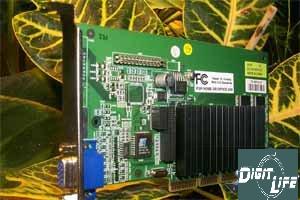 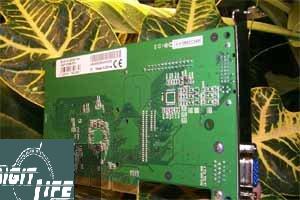  Winbond produces memory chips with 6 ns access time, which corresponds to 166 MHz. The memory works exactly at this frequency. The frequency, as you can see, conforms to the recommended by NVIDIA which is 175/166 MHz. The design is also identical to the reference card. The GPU is equipped with a big black heatsink similar to the one of the 3dfx Voodoo3 3000. The ships both in Retail and OEM packages. The Retail-package contains:
OverclockingThe ELSA Gladiac 511 doesn't shine in overclocking. The memory's frequency is too difficult to raise, while the GPU speed doesn't matter much, as you know. That is why this card wasn't overclocked for the tests. 2. ELSA Gladiac 511 PCIThe ELSA Gladiac 511 PCI has AGP x2/x4 interface, 32 MBytes SDR SDRAM memory located in 4 chips on the right side of the PCB. 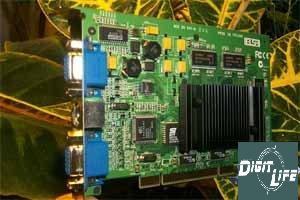 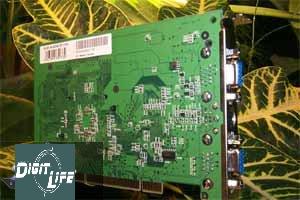 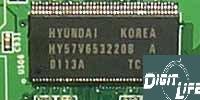 Hyundai produces memory chips with 6 ns access time, which corresponds to 166 MHz. The memory works exactly at this frequency. The ELSA Gladiac 511 PCI has a specific design since NVIDIA offers no reference design for PCI-models of GeForce2 MX cards. The card has TwinView support, i.e. two VGA connectors for two monitors and TV-out. Thus, you may display an image either on two monitors or on a monitor and a TV screen. So, if you have got a mainboard without an AGP slot this card is the only (except the Matrox G450 PCI) which can provide you with a wide range of functions of image displaying on two monitors and of a sound level of 3D acceleration. However, you shouldn't expect the performance equal to an AGP card (see our 3Digest). The GPU has a big heatsink without a fan. But a chipset which works at 175 MHz can do without cooling at all. OverclockingThe ELSA Gladiac 511 PCI works rather good at 220/205 MHz. Well, the overclocking potential is promising, but the performance will hardly increase much because of the restrictions of the PCI bus. 3. ELSA Gladiac 511 DVIThe ELSA Gladiac 511 DVI has AGP x2/x4 interface, 32 MBytes SDR SDRAM memory located in 4 chips on the right side of the PCB.  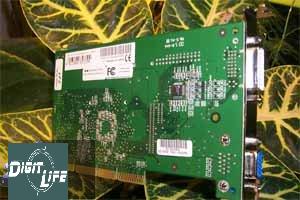 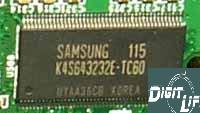 Samsung produces memory chips with 6 ns access time, which corresponds to 166 MHz. The memory works exactly at this frequency. The difference from the first reviewed card is only in the DVI connector for digital monitors. OverclockingWe managed to raise the frequency only to the 220/200 MHz. Although it is not too much, the performance boost will be noticeable. Installation and driversTest system:
For the tests we used drivers from NVIDIA of 14.40 version, VSync was off. For comparative analyses the results of the following cards are used:
Test resultsAll the card have decent 2D quality which is similar to cards from other brand-name companies. The image is sharp up to 1280X1024 at 100 Hz. And even at 1600X1200, 75 Hz you may work comfortably with this card. For estimation of 3D quality we used id Software Quake3 v.1.17 - a game-test which demonstrates the card's operation in OpenGL with usage of a standard benchmark demo002. Quake3 Arenademo002The tests were carried out in two modes: Fast (16-bit color) and High Quality (32-bit color). 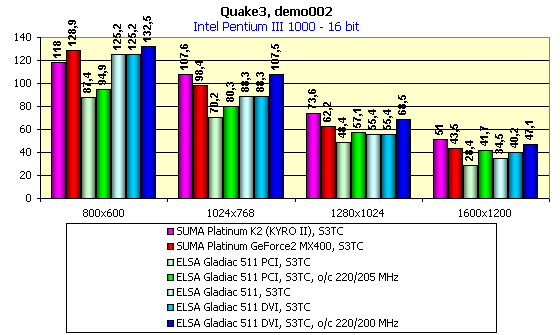 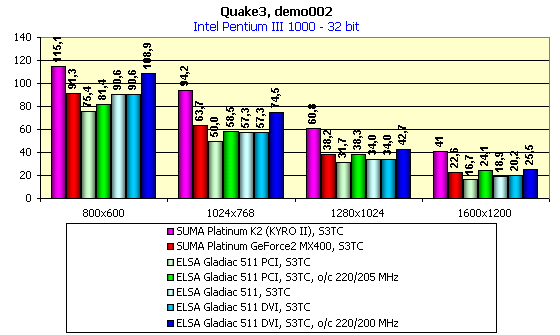 The performance of all these cards is excellent and conforms to their level. Conclusion
Highs:
Lows:
Write a comment below. No registration needed!
|
Platform · Video · Multimedia · Mobile · Other || About us & Privacy policy · Twitter · Facebook Copyright © Byrds Research & Publishing, Ltd., 1997–2011. All rights reserved. |